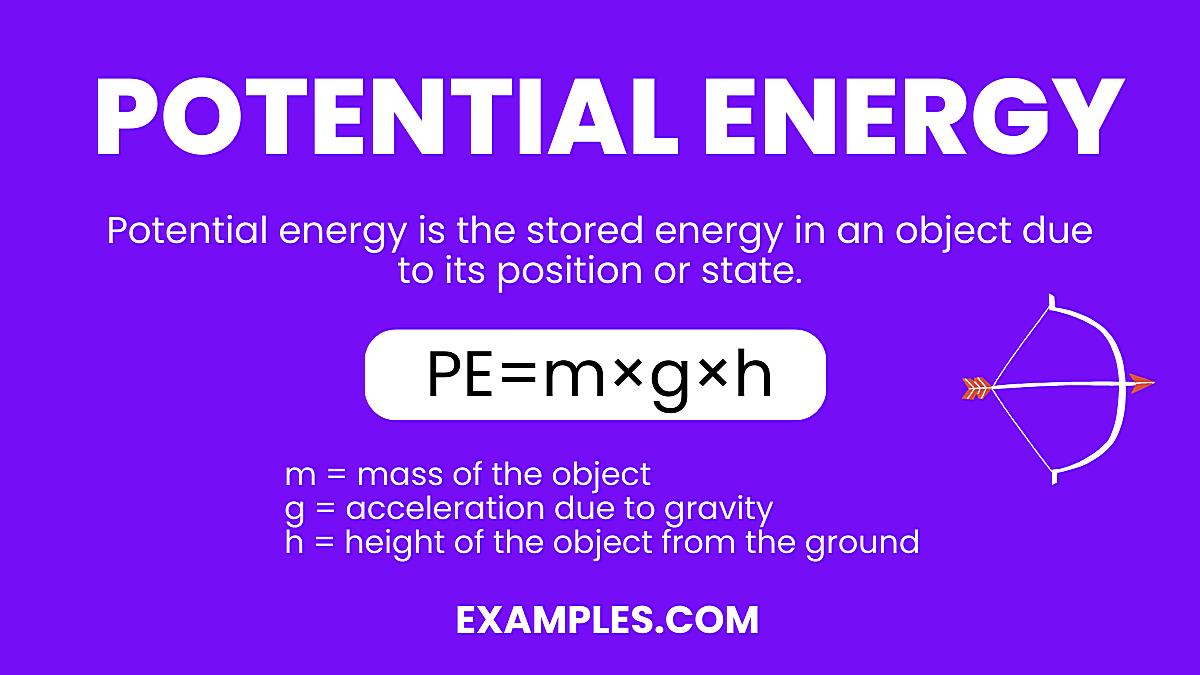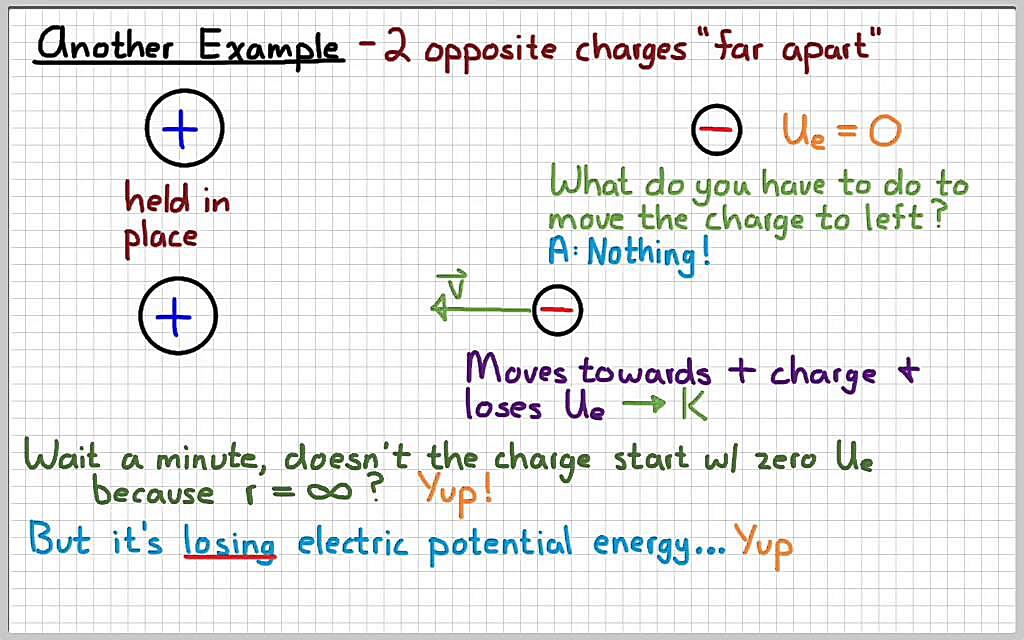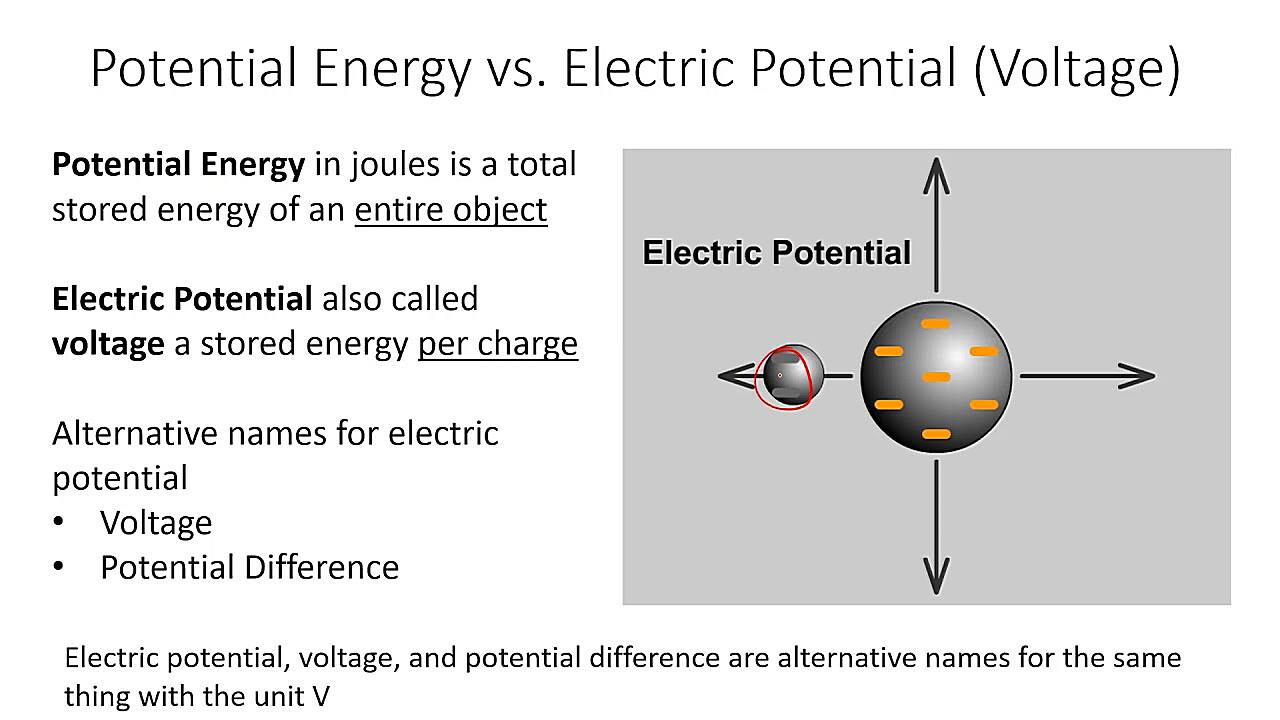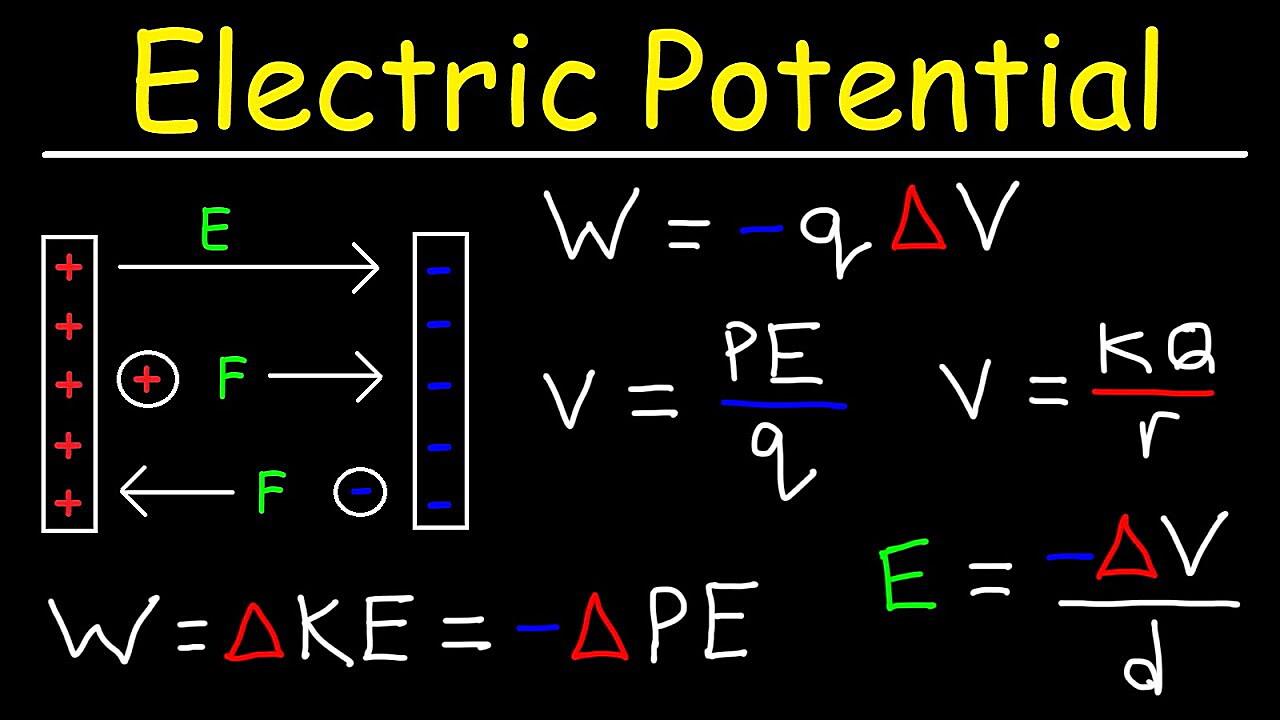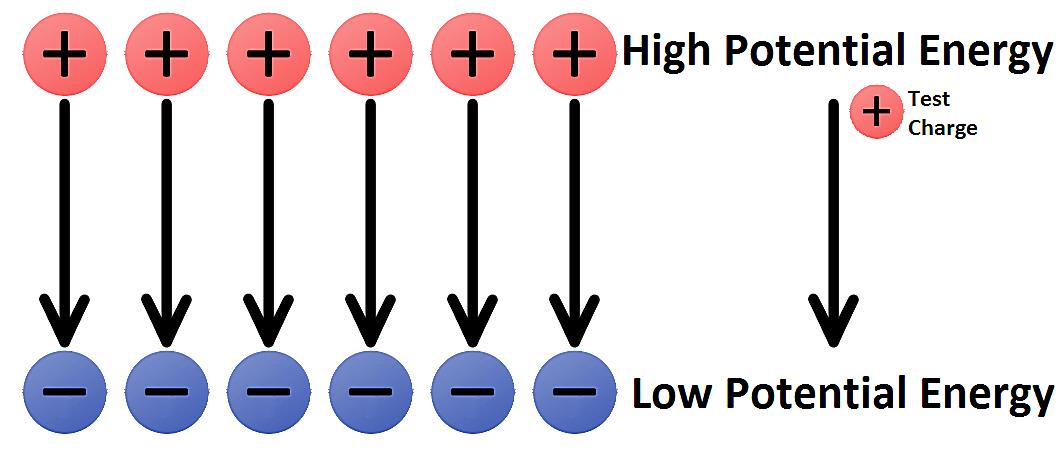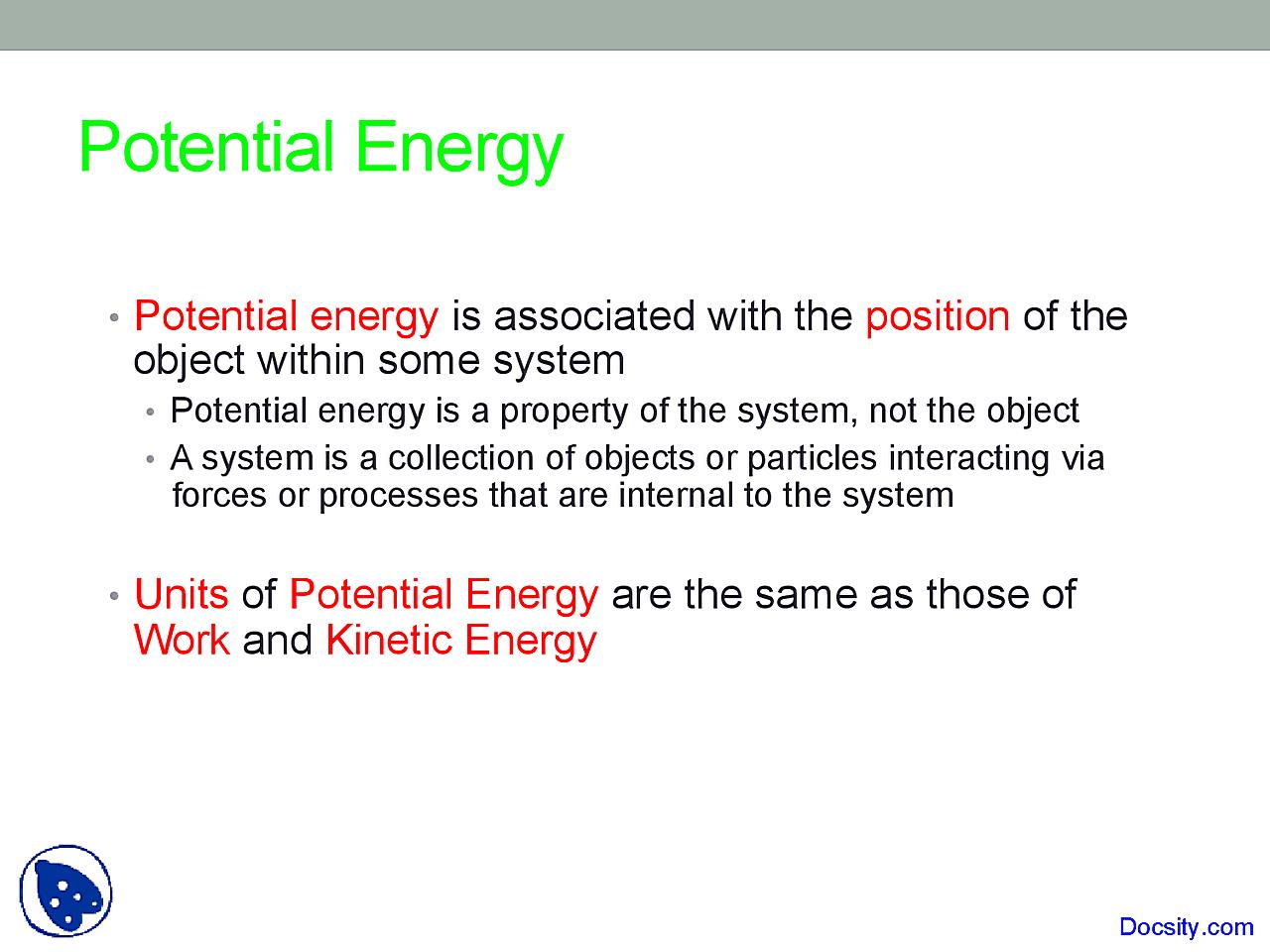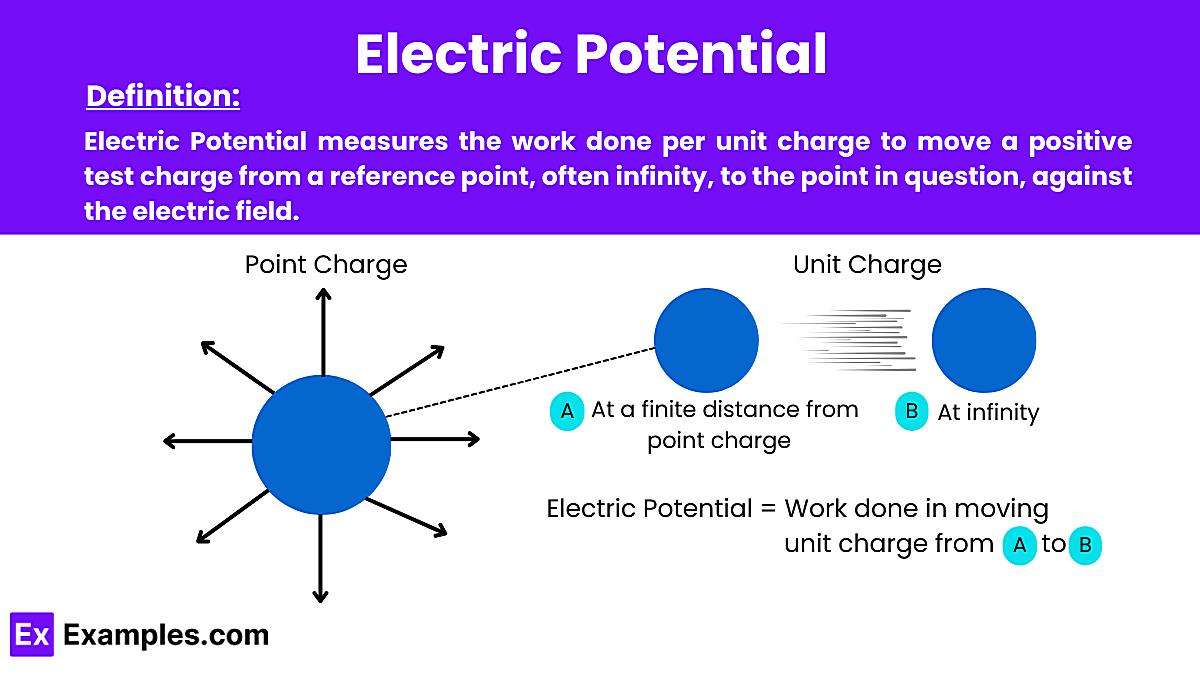Unveiling the Mystery of Potential in Physics
1. What Exactly Is Potential?
Alright, let’s dive into this idea of “potential” in physics. It’s not about your career aspirations or how much you might bench press someday. In physics, “potential” refers to a field of force that exists in space. Think of it like an invisible landscape. This landscape dictates how an object will behave if it’s placed in that landscape. It’s kinda like gravity affecting an apple hanging from a tree branch. It wants to fall.
More formally, potential is a scalar quantity associated with forces that conserve energy. These are called conservative forces. Gravity is the most well-known conservative force, but electrostatic forces are another big one. What makes them “conservative”? Basically, the work done by a conservative force is path-independent. This means it only depends on the starting and ending points of an objects movement, not the route it takes to get there. Imagine climbing a mountain: the amount of energy you expend going straight up is the same as zigzagging all the way up (ignoring friction, of course!).
So, why do we care? Because potential allows us to calculate the potential energy of an object within that field. Potential energy is, essentially, stored energy. It represents the capacity to do work. A rock perched at the top of a hill has potential energy due to gravity. A stretched rubber band has potential energy due to elastic forces. This potential energy can then be converted into kinetic energy (the energy of motion), like when that rock tumbles down the hill. Think of it like saving money. You have the potential to buy that awesome gadget! But until you actually spend the money (convert potential energy to actual purchase — kinetic energy?) you just have the capacity to do so.
Importantly, potential itself isnt the same as potential energy. The potential describes the landscape created by the force, while the potential energy describes the energy an object has because of its position in that landscape. Kinda like the map vs. the treasure itself! The map is the potential; the location of the treasure is the potential energy an object has relative to that location.
Gravitational Potential
2. The Down-to-Earth Example
Let’s start with the gravity example. We all know gravity, right? The invisible force that keeps us from floating off into space. Well, the gravitational potential is a description of how gravity affects space around a massive object like Earth or a planet. It’s related to how much energy it would take to move an object from a very, very far distance (theoretically infinity) to a specific point in the gravitational field.
The closer you are to a massive object, the lower the gravitational potential. This makes sense because gravity pulls you closer. Think of it as walking downhill. Lower altitude equals lower potential. And conversely, the higher you go (farther away from the object), the higher the potential. So, when we talk about gravitational potential energy, we are talking about the energy a mass has because of its location in the gravitational potential field. Lifting a bowling ball increases its gravitational potential energy. Dropping it? That potential energy gets converted to kinetic energy as it speeds towards your toes (ouch!).
Mathematically, the gravitational potential V at a distance r from a point mass M is given by: V = -GM/r where G is the gravitational constant. Notice the negative sign? This indicates that the potential is lower closer to the mass. The potential energy U of an object with mass m at that point is then U = mV = -GMm/r . The further you are from the attracting mass, the closer U gets to zero.
Consider a satellite orbiting Earth. It has both kinetic energy (because it’s moving) and gravitational potential energy (because it’s in Earth’s gravitational field). The total mechanical energy of the satellite is the sum of these two energies, and as long as no external forces are acting on it, that total energy remains constant. It’s a beautiful balance between falling and flying, all thanks to potential!
Electric Potential
3. Sparks Will Fly (or Maybe Not)
Now let’s move on to electric potential. Instead of dealing with masses and gravity, were dealing with electric charges and electric forces. Just like a mass creates a gravitational potential, an electric charge creates an electric potential around itself. This potential dictates how other charged particles will behave in its vicinity.
The electric potential at a point is defined as the electric potential energy per unit charge. In other words, it’s how much energy a single charge would have if placed at that point. This is often measured in volts (V), where 1 volt is equal to 1 joule per coulomb (J/C). The formula for the electric potential V at a distance r from a point charge q is: V = kq/r where k is Coulomb’s constant.
Positive charges create a positive electric potential, meaning a positive test charge would have a higher potential energy if placed near them. They’re like the uphill climb in the gravitational analogy. Negative charges, on the other hand, create a negative electric potential. A positive test charge would have a lower potential energy if placed near them. It’s the downhill slide! Opposites attract, as they say, because positive charges “want” to move towards regions of lower (more negative) electric potential.
Electric potential difference is extremely important to understand for circuits. A battery creates an electric potential difference, which is what drives the flow of electric charge (current) through the circuit. Think of the battery like a pump that’s raising water uphill. The water represents the charges, the pump provides the electric potential, and the water flowing is electric current. The larger the potential difference (voltage), the stronger the “push” on the charges.
Potential Energy Surfaces
4. Mapping the Energy Landscape
Potential energy surfaces are brilliant tools for visualizing the behavior of systems in physics and chemistry. Imagine a topographical map, but instead of showing elevation, it shows potential energy. Valleys represent regions of low potential energy — places where the system is stable. Peaks represent regions of high potential energy — unstable states. A ball placed on such a surface will naturally roll downhill toward the valleys, seeking the lowest energy state.
Consider a chemical reaction. The reactants start in one “valley” on the potential energy surface. To react, they need to overcome an energy barrier (the “hill”) to reach a lower energy “valley” representing the products. This barrier is related to the activation energy of the reaction. Enzymes act as catalysts by lowering the height of the hill, allowing the reaction to proceed more easily. It is almost as if the enzyme creates a tunnel through the hill!
Another example involves the movement of atoms within a molecule. The bonds between atoms are like springs, and the potential energy surface describes how the energy changes as the atoms vibrate and rotate relative to each other. The “valleys” correspond to the equilibrium bond lengths and angles, while the “hills” correspond to distorted configurations. By studying the potential energy surface, we can understand the vibrational modes of the molecule.
These surfaces aren’t always easy to calculate, especially for complex systems. They often require sophisticated computational techniques. However, the insights they provide are invaluable for understanding the behavior of everything from atoms and molecules to galaxies and black holes. So, the next time you see a potential energy surface, remember that it’s a map of the invisible forces that govern the universe.
Applications in the Real World
5. Potential Impact
You might be thinking, “Okay, potential sounds kinda cool, but where do I actually see it in action?” The truth is, it’s absolutely everywhere! From the power grid that keeps your lights on to the medical devices that save lives, the principles of potential are fundamental to countless technologies.
Consider hydroelectric dams. They harness the gravitational potential energy of water stored at a high elevation. As the water flows downhill through turbines, it converts that potential energy into kinetic energy, which then drives generators to produce electricity. It’s a clean and renewable source of energy, all thanks to the power of gravity and potential.
Medical imaging techniques like MRI (Magnetic Resonance Imaging) rely heavily on the principles of electromagnetic potential. MRI machines use strong magnetic fields to align the nuclear spins of atoms in the body. Then, they apply radio waves to perturb these spins and measure the signals emitted as the atoms return to their equilibrium state. By carefully mapping the electromagnetic potential around the body, doctors can create detailed images of internal organs and tissues.
Even in everyday electronics, potential plays a crucial role. The transistors in your computer, smartphone, and countless other devices rely on the controlled manipulation of electric potential to switch circuits on and off. These tiny devices are the building blocks of modern electronics, and they wouldn’t be possible without a deep understanding of electric potential and its behavior in semiconductor materials.
Frequently Asked Questions (FAQs)
6. Your Burning Questions, Answered!
Q: Is potential energy the same thing as energy?
A: Not quite! Potential energy is a form of energy. Specifically, it’s stored energy that an object has due to its position or condition. Think of it like a spring that’s compressed or a ball held high above the ground. It has the potential to do work but isn’t actively doing anything yet. Actual energy usage is more related to kinetic energy.
Q: Does potential always have to be related to a force?
A: Yes, pretty much! Potential is always associated with a force. It’s the “landscape” created by that force. If there’s no force, there’s no potential. Think of it like saying you have the potential to be a great chef, but theres no restaurant around you. Potential needs something to act on!
Q: Is potential a real thing, or just a mathematical concept?
A: It’s a real thing, in that it describes a physical phenomenon! While we often use mathematical equations to describe it, the underlying concept of potential energy and its effect on objects is very real. Just ask anyone who has ever been hit by a falling object!
